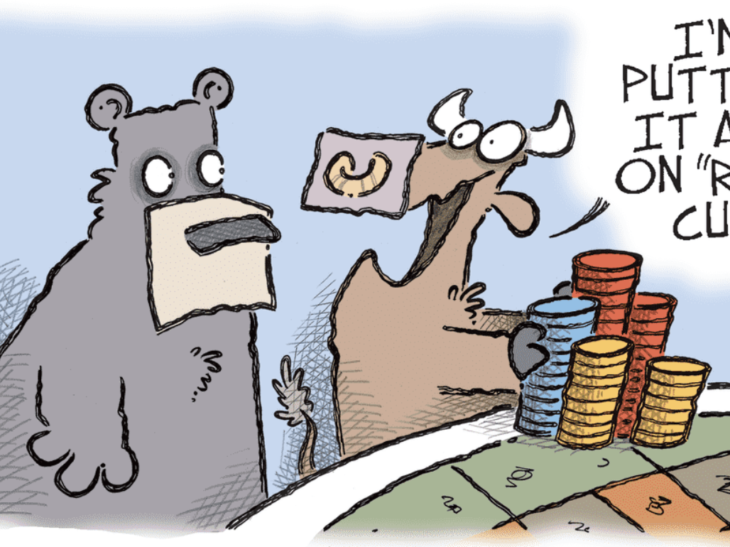Credit Suisse Commentary: Turkey—Pushing the limits
 credit suisse
credit suisse
Economic activity is now rebounding from its April low
Turkey’s relatively well-functioning health infrastructure and young population facilitated the containment of the pandemic and paved the way for the easing of some restrictions from 11 May which is now reflected in economic activity indicators. Following a sharp contraction in 2Q, we pencil in a sequential recovery in real GDP from 3Q and forecast that full-year real GDP will contract 2.5% in 2020.
That said, the outlook for economic activity in Turkey – similar to many other countries – is subject to the uncertainty around a renewed wave of infections in the absence of a treatment for the virus. The recovery beyond the near term is also subject to considerable uncertainty, in our view, due to Turkey-specific factors, such as the further impairment during this period of corporate balance sheets (which only partially recovered after the August 2018 crisis), the challenging outlook for services sector employment (which makes up 57% of total employment) and the overall lack of policy credibility/visibility which impedes capital inflows and/or leads to loss of reserves. (A possible cabinet reshuffle in mid-July might have implications for economic policy.)
Central Bank reserves close to danger zone
The authorities responded to the depreciation pressure on the lira driven by the monetary expansion and a challenging balance of payments backdrop – by drawing down the central bank’s already low non-gold FX reserves in a non-transparent manner. The central bank’s gross non-gold FX reserves declined to $53.2bn as of 19 June from $81.2bn at end-December. The extent of the reserve drain is masked by an increase (equivalent of $10bn) on 20 May of the central bank’s swap deal with Qatar and an increase of about $25bn in the stock of the central bank’s currency swap transactions with local banks in the first five months of this year. Overall, the central bank appears to have sold about $50bn in FX to finance the balance of payments and support the lira in the first five months of this year. (It is worth highlighting that the state banks’ net short FX position also reached a record-high level of $6bn as of 19 June, compared to nil in mid-December.)
In order to sustain this untenable combination (of monetary expansion and FX intervention), the Turkish authorities have also frequently changed rules and regulations around capital flows, especially in relation to the London swap market, and increased taxes on residents’ FX purchases.
The new round of credit stimulus by state banks complicates the balance of payments outlook, in our view
We forecast the full -year current account deficit at $12.6bn (1.8% of GDP) for 2020, but we see various risks around this forecast. Our full -year forecast compares with a cumulative (estimated) current account deficit of about $16.0bn in the first five months of this year. Along with the low oil prices, the gradual re-opening of the European economies (which should support Turkey’s merchandise exports) should be beneficial for the current account deficit in the coming months. However, the new round of credit stimulus makes the near -term outlook for imports and the current account deficit uncertain at a time when the adverse tourism shock is becoming more pronounced and restricting Turkey’s FX earnings.
That said, the country’s scheduled external debt repayments are smaller in 3Q compared to 2Q, which might ease the pressure on lira/reserves in the near term.
Further loss of reserves would aggravate investor concerns around Turkey’s external debt repayment capacity
Its swap deals with Qatar and China, which are denominated in local currencies, account for about $16bn of the central bank’s non -gold FX reserves of $53.2bn. Its swap transactions with local banks - at about $36bn as of end -May - account for almost all of the $37bn in the central bank’s remaining “hard currency” non -gold FX reserves. Local banks also hold $41bn in their required and optional FX reserves at the central bank which are counted as part of its gross non -gold FX reserves. The data show that the central bank’s net foreign assets, adjusted for its swap transactions, are in negative territory and that the central bank has spent part of the FX liquidity that the local banks hold at the central bank to finance the overall balance of payments for the country so far this year. The central bank can continue to draw down its gross international reserves (which also include $38.4bn in gold reserves as of 19 June), as long as the local banks are not faced with circumstances that force them to demand their FX from the central bank.
No BoP shock in the short-term, but.....
We maintain our view that the country will continue to meet its external funding requirements in the near term, perhaps with some further reserve loss. This assumes that the current account deficit, portfolio outflows and dollarization will remain manageable and the residents will maintain their long -standing confidence in the banking sector. However, the longer it takes for Turkey to put together a credible economic program (which should have been done after August 2018) to address its vulnerabilities, the more uncertain the long -term outlook will become, in our view. Additional swap deals with other central banks, without a comprehensive program, would provide only a temporary relief, in our view.
The MPC surprised the market by pausing on 25 June, but left the door open for further easing
The sequential core inflation dynamics worsened in May due to the lira’s depreciation and other cost -push factors driven by the pandemic. However, the inflation outlook benefits from weaker economic activity and lower oil prices. Provided that the lira remains well -behaved, headline inflation will likely ease from July after an expected peak of about 12.0% in June. (Our end -2020 inflation forecast is 9.0%.)
This might allow the MPC to cut the policy rate further to 7.50% in the autumn of this year. However, in our view, the longer -term inflation outlook is subject to upside risks, which, combined with the drain on reserves, underscores the need for a tighter policy mix, possibly in 2021.
Excerpt from Credit Suisse EM Quarterly
You can follow our English language YouTube videos @ REAL TURKEY: https://www.youtube.com/channel/UCKpFJB4GFiNkhmpVZQ_d9Rg
And content at Twitter: @AtillaEng
Facebook: Real Turkey Channel: https://www.facebook.com/realturkeychannel/






